Coral, plant or animal?
For several centuries, the nature of this strange organism, resembling small flowering trees attached to rocks at the bottom of the sea, was the subject of much debate by naturalists.
Corals are in fact small animals, called polyps, in the shape of sea minnows that can form colonies. These polyps make a common skeleton which for some species become the foundation of a coral reef.
The first observations of coral were made in the Mediterranean, by Pliny the Elder (1st century AD) on red coral (the one from which jewellery is made). Once brought to the surface, the coral would quickly die. Thus, it was considered a sea plant that turned into stone when taken out of the water. It was not until the middle of the 18th century that it was recognized as an animal that was classified in the large family of stinging animals, the Cnidaria.
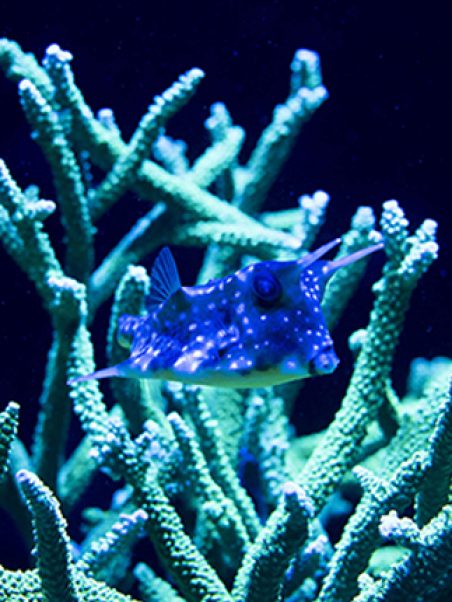
The different corals
There are solitary corals, colonial corals, reef builders, soft corals, false coral…
Not all corals build a calcareous skeleton, like hard corals. There are also soft corals which generally grow faster… And not all corals live near the surface in warm tropical waters, some live deeper and sometimes in cold waters.
For more information:
- Deep-sea corals in cold waters by Ricardo Serrão Santos, oceanographer
- Our factsheets on coral
Coral reefs
Coral reefs are made up of a multitude of coral species which together form an ecosystem, i.e. a very specific natural environment made up of different plants and animals.
Coral reefs are among the largest and most complex ecosystems on the planet. They are home to thousands of species of fish, but also other animal species, such as crabs, starfish, shellfish…
Coral reefs serve as refuges, food reserves and nurseries for their many inhabitants: from the smallest algae to numerous fish and invertebrates, but also to sea turtles and sharks.
For more information:
- Coral reefs by Jean Jaubert, marine biologist and former director of the Oceanographic Museum of Monaco
- Our factsheets on coral
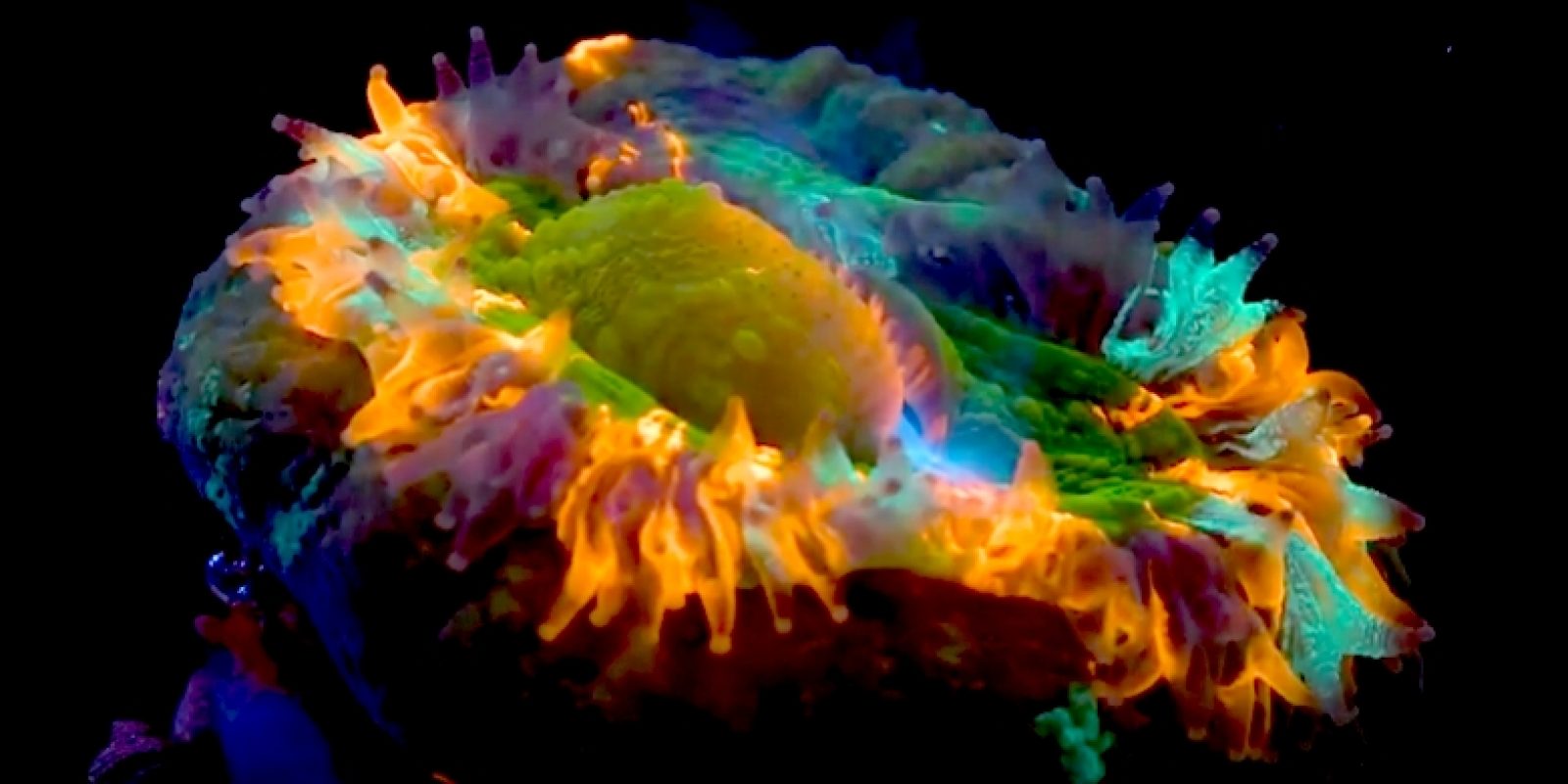
Like all animals, coral reproduces sexually (by releasing sperm and eggs) but also asexually (by taking cuttings like a plant)! Let’s discover the mysterious reproduction of corals.
Sexual reproduction
Like all animals, corals reproduce sexually. There are male polyps that produce male gametes (sperm) and female polyps that produce female gametes (eggs). Corals that live in a colony can have both males and females in the same colony, so the coral is said to be hermaphrodite.
The fertilization that takes place during the meeting between the male and female reproductive cell can be of two natures: the fertilization is external, and the spermatozoids go to the meeting of the ovules in full water, after being ejected by the polyps. Fertilization is internal, the male polyps emit spermatozoa which are received in a female polyp incubator.
During fertilization, an egg cell is formed which gives birth to a ” planula larva ” that wanders for some time in the ocean currents before dropping to the bottom. The larva then transforms into a polyp which is fixed on a rock and becomes a new colony. Sexual reproduction allows the propagation of corals in new spaces while ensuring a genetic mixing.

Asexual reproduction
The coral, like other animals, has the particularity of being able to reproduce in an asexual way, i.e. without releasing sexual cells. Coral fragments, either because of natural disturbances (storm, cyclone or predator) or because of voluntary or involuntary human action. If the fragmented piece, which can be called a cutting, is in a favourable environment, it will continue to grow and form a new colony and thus strengthen the cover locally on the sea floor. It is this particularity that offers the possibility to aquariums to populate their tanks without taking species from the natural environment.
Various institutions involved in the knowledge and protection of the oceans (Oceanographic Institute, Scientific Centre of Monaco, Prince Albert II Foundation, Explorations de Monaco) have combined forces to raise public awareness and act in favour of the survival of coral reefs. High-level scientific research, organization of symposiums, political influence, mobilization of the media, financing of NGO projects… The actions are numerous.
A commitment initiated by Prince Albert I
The Oceanographic Museum of Monaco, created by Prince Albert I of Monaco (1848-1922) with the aim of “knowing, loving and protecting the oceans”, houses one of the oldest aquariums in the world. It was at the end of the 1980s that the aquarium’s teams, accompanied by Professor Jean Jaubert, perfected the maintenance and reproduction of corals outside their natural environment.

Monaco at the initiative of the World Coral Conservatory
What if the major crisis of biodiversity loss and global warming that we are currently experiencing caused corals to disappear? In response to this threat, the Scientific Centre of Monaco and the Oceanographic Museum have decided to create a World Coral Conservatory in order to preserve the strains of many species of coral in aquariums so that they can be studied before eventually attempting to re-implant them in suitable areas.
Currently, all the aquariums in the world cultivate nearly 200 species of corals. The objective is to protect 1000 species of corals within 5 years, i.e. two thirds of the existing species. These naturally occurring corals will be distributed to the world’s largest aquariums and research centres. The Oceanographic Museum of Monaco is coordinating this beautiful project with the Scientific Centre of Monaco.
Read more:
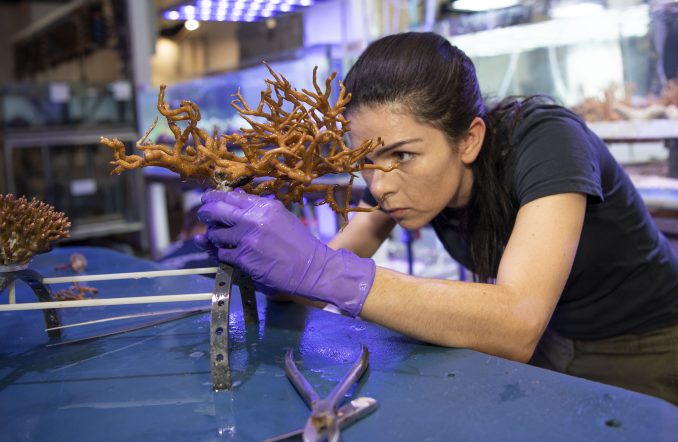
Some coral species are being studied to better understand calcification or the spread of disease, while others are being studied for their molecules that protect against sunlight or aging. Corals are the basis of many research projects to find tomorrow’s drugs or cosmetics or to understand how certain diseases are formed.
Coral reefs have an important ecological role. Often in waters that are not very rich in phytoplankton, the source of the marine food chain, they offer real oases of life in the middle of the oceanic desert. They also provide an ideal natural barrier against cyclones, storms and erosion as they absorb the power of the waves.
Coral reefs: an oasis of life
Although they cover barely 0. 2% of the ocean’s surface, coral reefs are home to 30% of marine biodiversity! For fish and other marine animals, corals are real shelters against predators, but also a reproduction and nursery area for many species. They are the essential foundation of marine life in the tropics.
Coral reefs provide direct sustenance to 500 million people worldwide through fishing, and reefs protect coastlines more effectively than any man-made structure from swells and tsunamis.
Read more:
- Coral reefs by Jean Jaubert, marine biologist and former director of the Oceanographic Museum
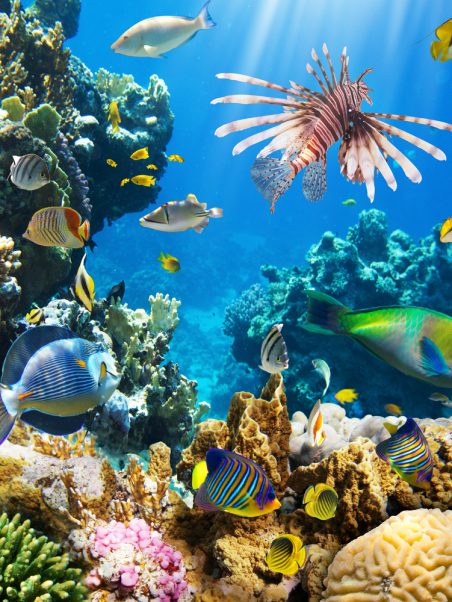
A major asset for tourism
They are a major tourist attraction and generate a significant part of the economic income of the tropical regions where they are found. Annual net profits of several million or even billion euros per year. Australia, Indonesia, the Philippines, more than a hundred countries benefit from this ” reef tourism “.
Medical Perspectives
Humans and corals have a common genetic heritage. Studying coral and the molecules they produce offers many prospects for human and animal health. The genome, the genetic material of the Acropora coral, has 48% correspondence with that of a human being. While the latter shares only 8% of correspondences with Drosophila, a fly used by laboratories as a model for genetic work! This represents incredible prospects for medical research!
Read more:
- Coral reefs by Jean Jaubert, marine biologist and former director of the Oceanographic Museum
- Why don’t corals get sunburned? by John Malcolm Shick, Professor of Zoology and Oceanography
- Why don’t Corals Get sunburned? by John Malcolm Shick, Professor of Zoology and Oceanography
- The Institute’s coral sheets
A delimited space at sea
A Marine Protected Area (or MPA) is a delimited area at sea that meets the objectives of nature protection (fauna, flora, ecosystems) and the sustainable development of economic activities such as sustainable fishing and responsible tourism.
Formed into effectively designed and managed networks, MPAs provide refuges for marine flora and fauna, restore important ecological functions (e.g. safeguarding spawning grounds and fish nursery areas) and maintain the production of ecosystem goods and services. These are wise investments for the health of the oceans and the development of the blue economy.
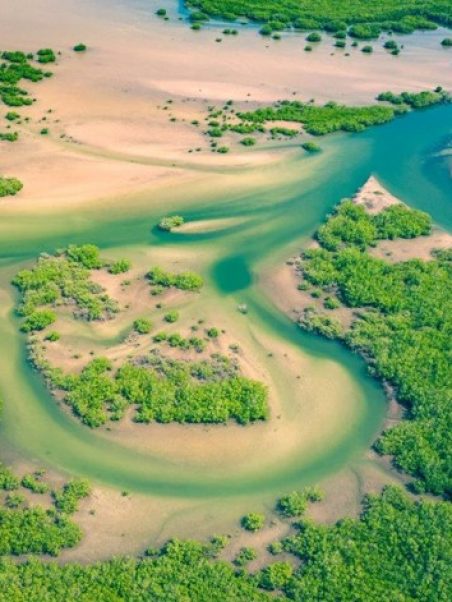
Data as of 27.04.20. Source
Saving coral reefs: many solutions
To try to save coral reefs, we must act urgently and simultaneously against global and local threats, reduce pollution, protect areas that are still in good condition, restore degraded areas, and develop a blue economy around certain reefs, which protects and enhances them. But first and foremost, we must fight against climate change!
Fighting global warming
This is the first emergency to slow down ocean warming and limit coral bleaching episodes. To achieve this, we must drastically reduce greenhouse gas emissions in order to stay below 1.5° C of warming, save energy, gradually but resolutely move towards a low-carbon economy, and use more renewable energy. Less CO2 in the atmosphere also means that the ocean acidifies less quickly and has less impact on organisms that, like corals, create a calcareous skeleton.
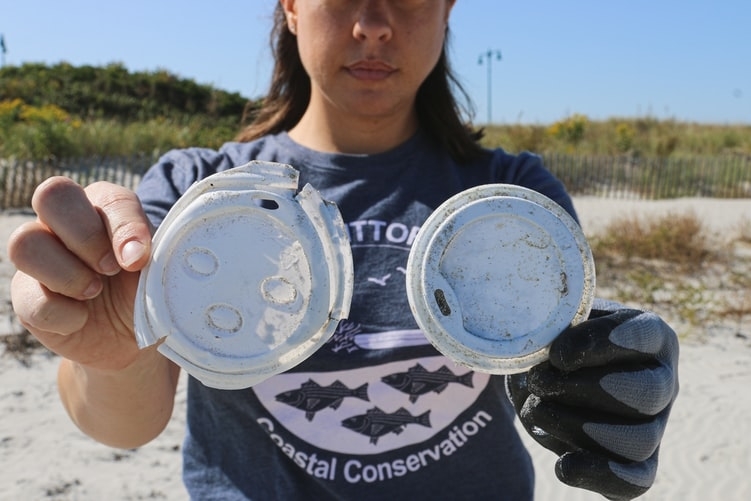
Fighting against pollution
Pollution suffocates or poisons the reefs. All forms of chemical and physical pollutants that end up in the sea must be eliminated! It is up to all of us to adopt the right practices, the right gestures, everywhere and in all circumstances, including inland. Together, let’s reduce, reuse and recycle to limit the consumption of resources and the creation of waste.
For more information:
We can all take action! Discover 10 things you can do on holiday or in your daily life to preserve coral reefs.
Promoting the blue economy
Developing sustainable economic activities that respect coral reefs and create value and jobs in many economic sectors (tourism, fishing, aquaculture, agriculture, maritime transport) is possible! Among the main actions to be carried out: stopping the concreting of the coastline, limiting urban sprawl and infrastructure construction (industrial, tourist), particularly in fragile areas. For responsible tourism, we must develop scuba diving that respects species and ecosystems, limit the number of divers if necessary, provide better supervision and raise awareness, and use anchor buoys. For a sustainable agriculture, the priority is to protect waterways (because everything reaches the sea), stop deforestation and limit pesticides.
For responsible fishing and aquaculture, there is an urgent need for better control of practices and to fight against all forms of illegal fishing.
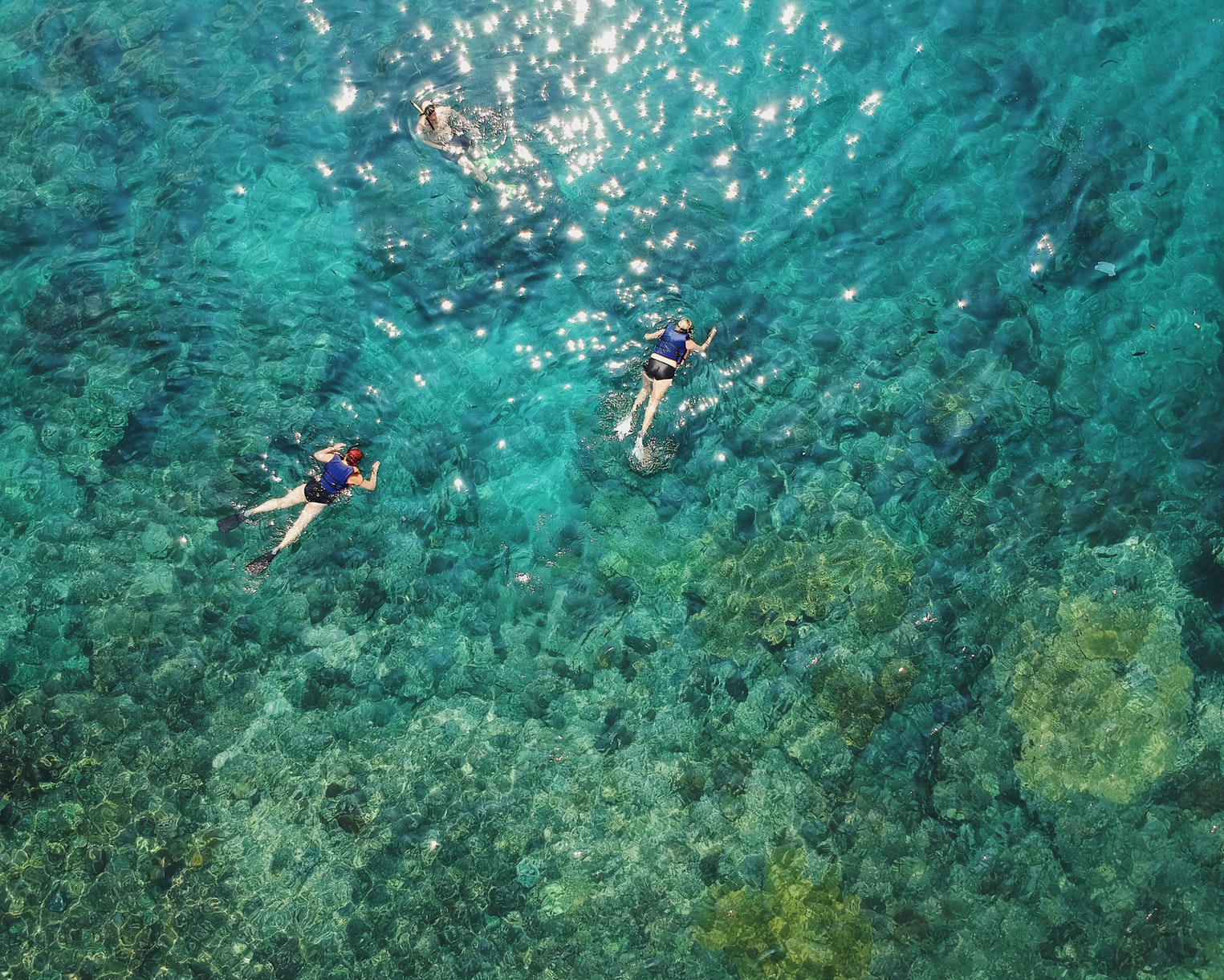
Protecting coral reefs and associated ecosystems
Coral reefs will have a better chance of being preserved if representative (in good condition and rich in species), networked, effectively managed marine protected areas (MPAs) are created where human activities are regulated.
Scientists recommend protecting the so-called “refuge” zones, particularly those in the “mesophotic” zone, located between 30 and 150 m deep and therefore relatively sheltered from marine heat waves. The corals found there are less vulnerable to bleaching and thus likely to serve as a reservoir to promote the recolonisation of degraded areas. At the same time, seagrass beds and mangroves must also be protected. These coral reef-related ecosystems play a major role in carbon cycling and storage, helping to combat the accumulation of greenhouse gases in the atmosphere.
Restore degraded reefs
Wherever possible, we must try to restore reefs degraded by human activities. This can be done by transplanting coral from one site to another(ex-situ), or by cultivating it in situ(in situ), where a fragment of coral can reform a new colony. Engaging local communities in this process and eliminating the local factors that had caused the loss of corals are two prerequisites for the success of such operations. Researchers are now developing new methods based on assisted evolution, selecting species or strains of corals that are resistant to heat waves, and re-implanting them to reform various reefs. They also try to collect gametes, eggs, larvae of corals, and to spread them on the reef, for example with aerial means. Seagrass beds and mangroves can also be restored by replanting or cultivating them, using methods based on scientific recommendations.
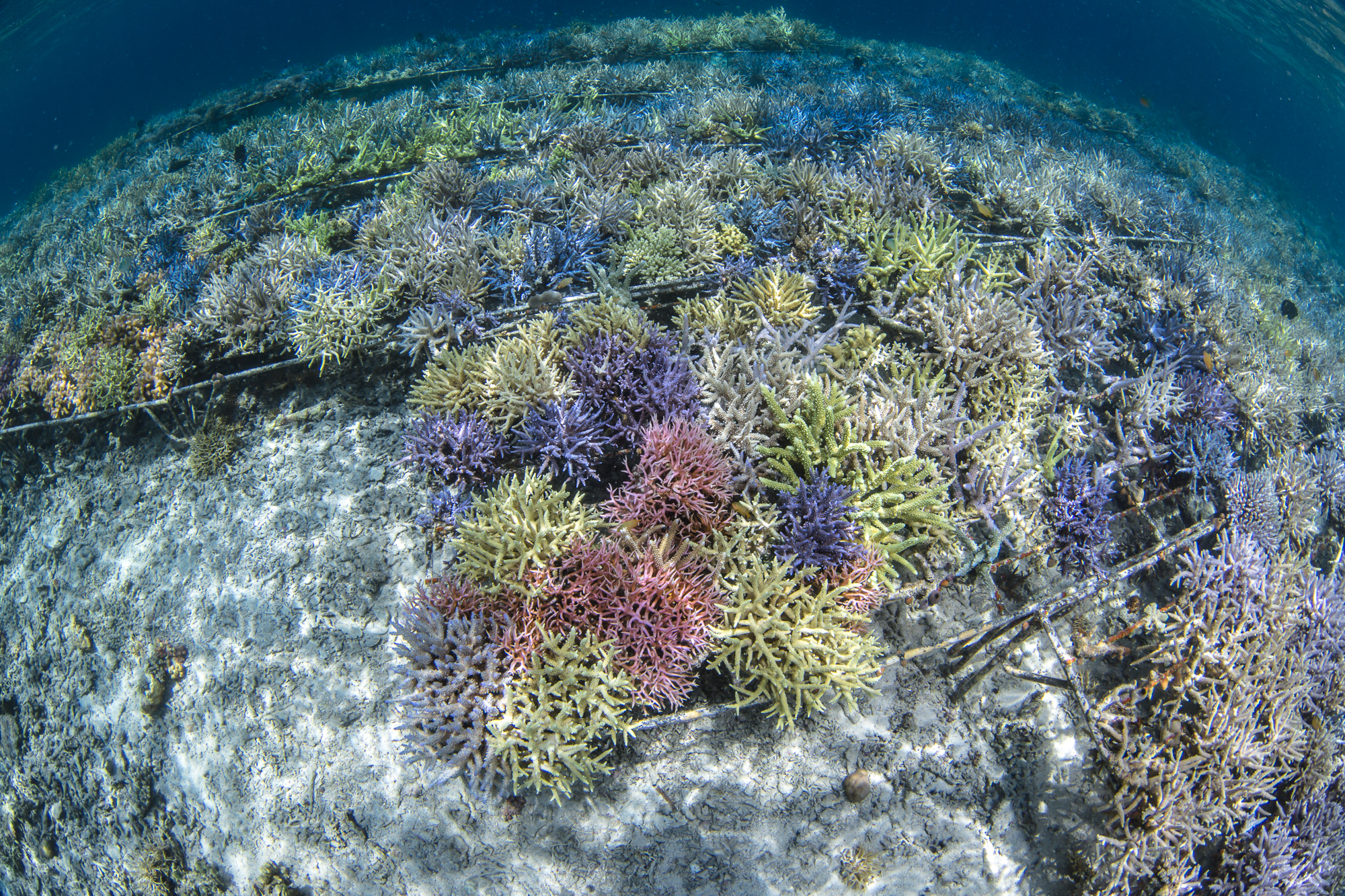
Creating a Global Coral Conservatory
Create a coral “bank”, just as there are seed banks. The one initiated by the Scientific Centre and the Oceanographic Museum will constitute a Noah’s Ark of 1000 species distributed in the largest aquariums and research centres in the world, with the aim of preserving the strains and re-implanting them in devastated areas. It will also make it possible to study the resistance of species to heat and to select the strongest varieties, an important contribution to their preservation, if we also manage to limit global warming.
Read more:

Corals host microalgae, called zooxanthellae, in their tissues. They are the ones that give the corals their colors. Depending on the pigments they contain, corals abhor pretty hues ranging from orange brown to purple.
These algae live in symbiosis with the coral, which means that everyone benefits.
Coral is carnivorous and feeds on small animals that pass by but this does not provide it with enough energy to grow and reproduce. About 75% to 90% of the coral’s needs are supplied by algae. Through the process of photosynthesis and in the presence of light, algae transform mineral salts (nitrogen and phosphorus) into organic matter, while consuming carbon dioxide and releasing oxygen. The coral brings the carbon dioxide it rejects by consuming oxygen during its respiration.
When the algae leave, the coral turns white.
Why do corals bleach?
When the algae are stressed, they are expelled by the coral and it is then that their transparent tissues reveal the white skeleton. This stress is caused either by bacteria or viruses (the corals are then sick) or by pollutants, or by the rise in temperature of the sea water.
It is this last point that worries climate specialists. According to the special report “The Ocean and Cryosphere in the Face of Climate Change” published by the Intergovernmental Panel on Climate Change (IPCC) in September 2019, the ocean has absorbed more than 90% of the heat accumulated in the atmosphere by the greenhouse effect since the industrial revolution!

Marine heat waves (comparable to our terrestrial heat waves) are likely to become 20 times more frequent even if the increase in atmospheric temperature is maintained at 2°C.
These heat waves are harmful to coral reefs, 90% of which are likely to disappear.
Read more:
Corals belong to the large family of Cnidaria, which includes marine invertebrates that have stinging cells such as jellyfish, gorgonians and sea anemones.
Corals do not only live in tropical seas. Under the name coral, we find different species, some of which live in the Mediterranean. In particular the famous red coral, the one whose skeleton is used to make magnificent jewellery.
Corals live alone or in colonies. A distinction is made between hard corals (Scleractinians), which include reef-building corals, and soft corals, which do not have a skeleton. Both categories are found in the Mediterranean.
The red coral
The red coral (Corallium rubrum) is recognizable by the bright red colour of its skeleton contrasting with its small white polyps that tirelessly shake their tentacles.
It is found specifically in the Mediterranean Sea and the western Atlantic (from the south of Portugal to Cape Verde) where it generally lives attached to the ceiling of caves or on drop-offs. It grows very slowly, a few millimetres per year.
It is its vivid colour, which keeps its brilliance even out of water, which made its reputation and earned it its use in the making of jewellery or objects.
Widely fished, with destructive methods it almost disappeared. Its fishing is now regulated and closely monitored, but it is still highly coveted by fishermen.
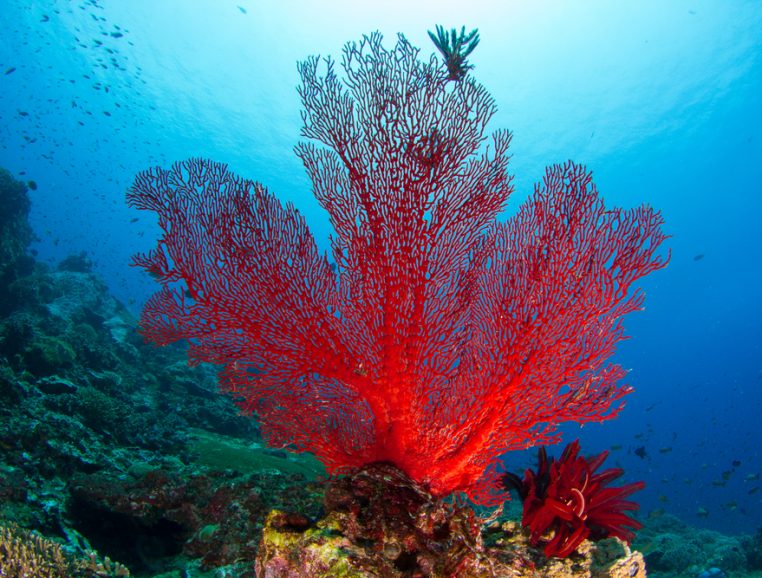
Coralligenous drop-offs
These large structures are found between 30 and 100 meters underwater. Fixed species such as gorgonians, sponges or black corals capture particles and micro-organisms in the currents to feed. These animals, which have calcareous, siliceous or horny skeletons, participate in the construction and consolidation of the drop-off.
Solitary corals in the Mediterranean
There are several species of solitary corals in the Mediterranean with particularly evocative names such as the yellow coral with the pretty name of buttercup, pigs’ teeth (Balanophyllia species) or dogs’ teeth (Caryophyllia species). They live attached to rocks from the surface to nearly 1000 meters for some species. From a few centimetres in diameter to 2 to 4 centimetres high, some like the Pigtooth have their tentacles rather short, while the Dogtooth corals are recognizable by their long and numerous tentacles ending with a small button that inflates and deflates.
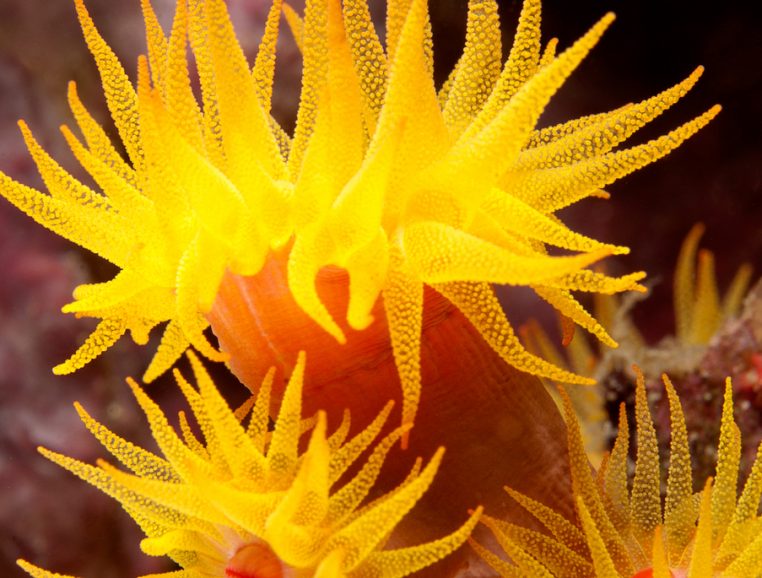
Reef-building corals
In the Mediterranean, there are hard corals similar to the builders of tropical reefs: the cladocores which can be found in the form of “potatoes” that can reach a diameter of some 50 centimetres. Their shape depends a lot on the depth at which they are found, the light and the currents.
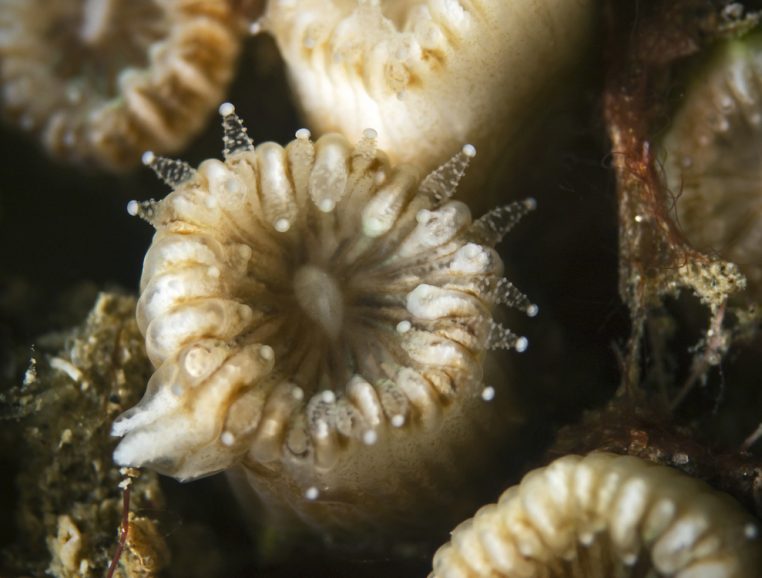
Soft corals
There are also soft corals (without a calcareous skeleton) that can be mistaken for sea animals. Some are colonial and form carpets on the rocks while others are solitary.
Read more:
- Thematic sheet: Scleractinian corals of the Mediterranean by Christine Ferrier Pagès
- Marine species reference: DORIS site
- Institute’s coral sheets







